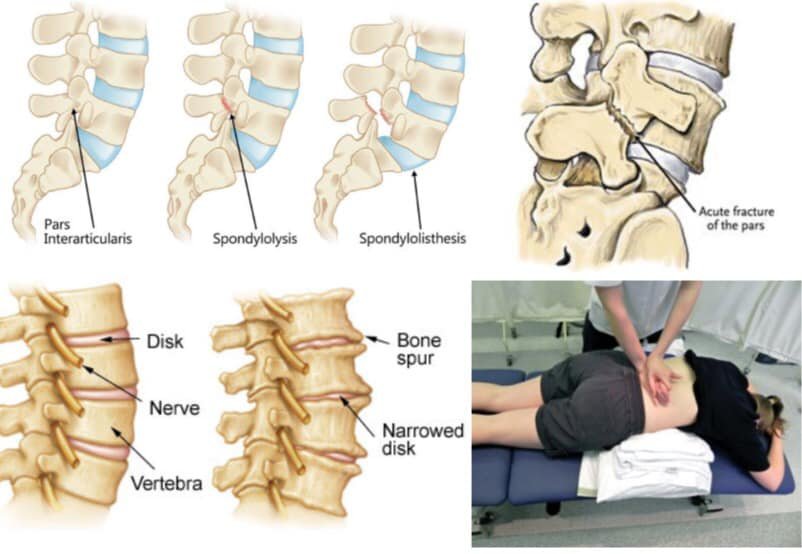Did you recently get an X-ray, MRI, or CT scan of your spine? Did it show that there were findings of SPONDYLOSIS or SPONDYLOLISTHESIS & still wonder what that means exactly?
Well, research shows that it affects about 3-10% of the general population from repeated overload, common in athletes or jobs that require a lot of lumbar extension & rotation.
If we look at the image with the “dog-shaped structure,” spondylosis is a fracture of the neck of the dog which is the pars interarticularis of the vertebra. If untreated, it can cause spondylolisthesis, where the vertebra slips forward.
Spondylosis can overtime affect your intervertebral discs, which are the cushions between each vertebra to help absorb shock. Like a jelly donut, the disc is filled with gel that if obstructed it begins to leak, leaving the disc unable to absorb the shock & compresses spinal nerves. Spondy can also cause osteophytes (bone outgrowths) & spinal ligaments laxity, affecting your spine's mobility to either hyper & or hypomobile.
Signs & symptoms:
Increased muscle tone and Dull ache
Sensory & sensory impairment
Pain with spinal extension
With physical therapy, we can help to treat your signs & symptoms!
Maitland Mobilizations: to increase mobility in the spine & surrounding joints. This will also help to avoid your muscles compensating & becoming tight. Research supports that this had the most effect for improving pain & range of motion within 4 weeks. See a physical therapist as this requires a specific technique!
Soft tissue massage: improves muscle tone for appropriate functional mobility & activation. Specifically to the quadratus lumborum & erector spinaes muscles, this will help to prevent excess lumbar extension
Strengthening program: strengthening the gluteus medius! (read the previous post about glutes importance)

